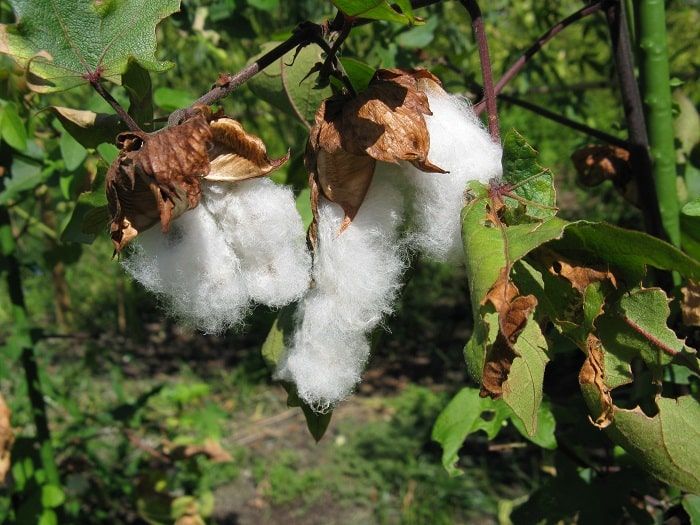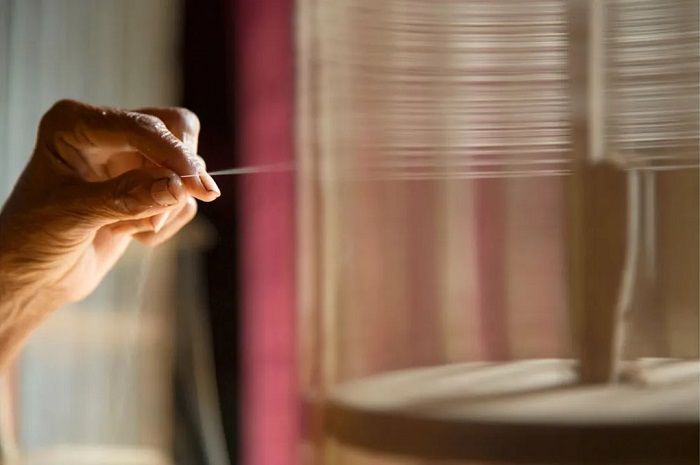
Muslin, the finer handloom-based woven cotton fabric a plain weave structure that dawned in Dhaka, the capital of Bangladesh, is resurrecting. The fabric, developed from a variant of the cotton plant grown only in the area south of Dhaka, has a far-reaching history stretching back thousands of years.
Produced since pre-colonial times and especially esteemed by the Mughal court the fabric was highly prized – in the British era, a yard of Dhaka muslin fetched prices ranging from £50-400 – for its fine quality. It was imported into Europe in large volume in the 17th and early 18th-century.
The Bengali muslin industry, however, was eventually vanquished by the British colonial rulers in favor of machine-spun British textiles and both the strain of cotton and knowledge of the intricate and arduous techniques used to produce the exquisite fabric slowly disappeared.

Finding lost knowledge
The revival journey of the muslin was launched a few years ago in 2018. Textile Today team had a conversation with one of the research team members Dr. Shah Alimuzzaman Belal, Dean, Faculty of Textile Engineering at Bangladesh University of Textiles (BUTEX).
Dr. Shah said, “Muslin was a heritage of ours. Honorable Prime minister Sheikh Hasina had close eagerness to revive the muslin again and she asked to take steps to resuscitate the prestigious heritage of Muslin. Following her instruction, Bangladesh Handloom Board initiated a project to revive Muslin.”
Thus a research team with wings was initiated. One wing set out to divulge into fiber part whereas another was responsible for yarn & fabric.
The fiber exploration team was led by Dr. Md. Manzur Hossain, and Textile part was led by Dr. Shah Alimuzzaman Belal.
The enthusiastic research group of yarn and fabric was led by Dr. Md. Manzur Hossain, Professor at the University of Rajshahi and Dr. Shah Alimuzzaman Belal, Professor at BUTEX.
Initially to bring the legendary fabric back identifying the right cotton – the locally known ‘Phuti karpas’ tree and an actual sample of Muslin garment – was the biggest challenge for the research team.
Muslin
The research team advertised all around Bangladesh to trace the sample of Muslin if anyone had it in their hand.
The team visited probable collections around the country. At the same time advertised all around Bangladesh to trace the sample of a Muslin garment if anyone had in their hand.
But after 200 years of the lost industry of Muslin, the team was unlucky as following the response from the advertisement, they did not find any actual sample of Muslin.
Eventually, the team went to the Bangladesh National Museum but failed to get the appropriate sample. As the museum authority declined to give any.
Hearing that Prime Minister Sheikh Hasina taken the initiative to send 5 members of the research team to visit the Victoria and Albert Museum, England to find out the
During the visit to the Albert Museum, the research team got hold of more than 30 original samples of Muslin and analyzed them. It was a real achievement for the team to find proper knowledge of the fiber, yarn and fabric to go ahead for revival.
Finding Phuti karpas
Muslin originates from Phuti karpas, a variety of Gossypium arboretum cotton.
The other team’s main challenge was finding the lost Phuti karpas cotton plant which disappeared in the wilderness along with the Muslin industry. And the team does not have any Phuti karpas seeds in the collection today.
Researchers knew that to make an original ‘Dhakai Muslin,’ they need to find the appropriate quality of cotton which complies with all the technical parameters.
The team collected known pictures drawn by historians from different sources and combed the historically known places where the plant grew.
By a stroke of luck, the researchers found the Phuti karpas cotton in Gazipur at Kapasia region – some 30 km (19 miles) north of Dhaka – inappropriate quality. As Spinning Phuti Karpas cotton is scandalously tricky – if it gets wrong, the thread will snap. A full of making yarn involved 16 steps.
Professor Dr. Manzur Hossain said, “Phuti karpas cotton fiber has enough tensile strength for developing muslin fabric.”

The weaving process of revived muslin
The main feature of the yarn is that it is to be made in a manual process.
As the fiber is fickle to work with, it would break easily if it is twisted into yarn. Instead, the locals overcame the rogue threads with a sequence of ingenious techniques developed over millennia.
Initially, a special yarn was imported from China which was 300 metric Count the finest in the world. It was difficult to run the power loom with that yarn.
The research team tried to run the weaving process manually and was able to run the weaving machine. And eventually produced a sample.
Then they started to procure weavers to produce the yarn from fiber. A tricky hurdle as there are still weavers making jamdani muslin, albeit rougher versions at lower thread counts – but not the finest higher count quality product.
They were trained to upgrade their skills for a long time so that they can make the finer count yarn. Though challenging but finally, they are now able to make Muslin yarn of 500 metric counts.
To shed more light on how intricate the process is, Professor Dr. Shah Alimuzzaman Belal explained, “At first yarn is separated from fiber by ginning process manually. Yarn is produced by hand spinning process. Training of spinner is going on at full speed. Muslin is a plain weave fabric that is produced from pit loom or handloom processes. 300- 500 metric count was used to weave muslin fabric.”
For this reason, developed muslin shows finer quality.
Professor Dr. Shah added, “Foremost significant characteristics of muslin are its thread density and irregular yarn. Normally 80-100 thread/square per inch was maintained to produce the Muslin fabric. Muslin is a loose structured plain weave fabric with irregular yarn of very fine count. Irregular yarn is an important feature of Muslin fabric. Lower thread density creates this scope to pass itself into the ring by imparting softness property. The overall process is under research.”
Bulk production challenge
Skilled manpower is the fundamental problem regarding the bulk production of muslin. It is totally a manual process. To produce Muslin fabric there are two fundamental requirements such as skilled manpower and manual yarn production.
At the same time, temperature controls and humidifiers achieve a low moisture environment – which is a prerequisite for developing muslin fabric, because low moisture temperature is suitable to produce higher strength of the cotton yarn. Meanwhile, some of the 50 or so tools required were no longer available.
Scope and opportunity of revived muslin
As it is a matter of national prestige, the Bangladesh government has given the project their backing and launched muslin house at Rupganj. Here Government will set 20 looms to start the primary production. Phuti Karpas cotton fiber is being cultivated in different places under the supervision of the Research team. And the Cotton Board is associated with the whole process.
The government is trying to develop Muslin on a commercial basis. In the meantime, Bangladesh takes geographical indication (GI) of muslin. GI denotes the originality of muslin from Bangladesh. The government will try heart and soul to export muslin to foreign countries in small quantities at the preliminary stage.
Conclusion
After 170 years, researchers and scientists have been able to give rebirth to the precious Dhaka Muslin fabric. Muslin – considered one of the great treasures of the age– has not only been a type of fabric for the Bengali people but also a part of the rich heritage that was long lost in the hand of British exploitation. Hopefully, Muslin fabric will be commercially available after the next 2 years.















